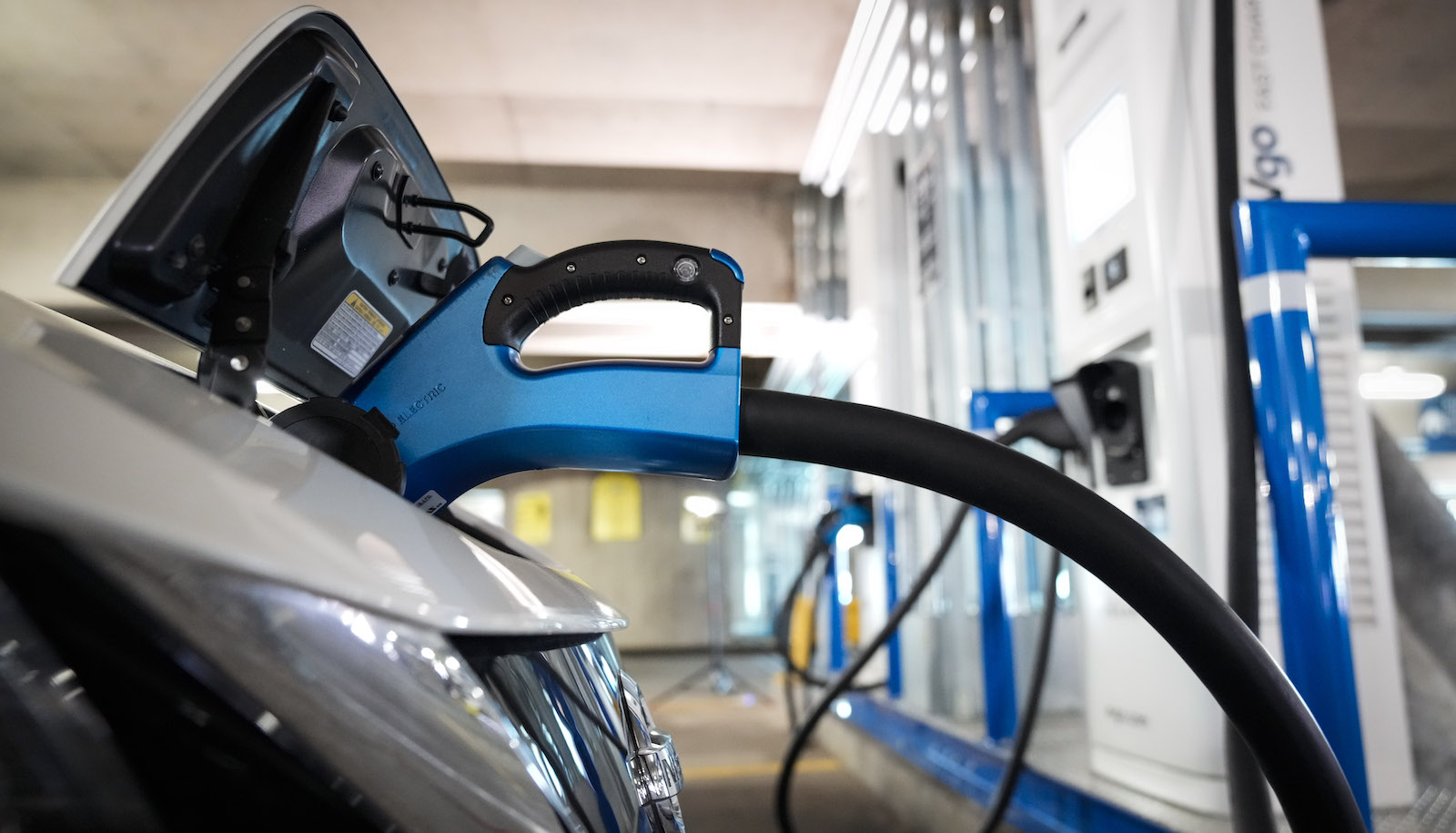President Joe Biden loves electric cars. Whether he’s zipping around a racetrack in Ford’s electric F-150 truck or promising that half of all cars sold in the U.S. will be electric or plug-in hybrids by 2030, the 46th president has made it clear that he wants to break the country’s addiction to gas-powered vehicles.
There’s a very solid reason for that: Today, less than 1 percent of the country’s 250 million cars, trucks, and vans are electric. If America is going to zero out its carbon emissions, that number has to go to 100 percent in just a few decades.
The good news is that Congress is poised to make it way, way easier for Americans to give up their gas cars for smooth, silent, all-electric ones. Last week, the White House released a framework for the Build Back Better Act, the $1.85 trillion budget bill that will also be the largest climate measure in American history. And nestled in the framework is a gangbusters improvement to the nation’s EV tax credits that could nudge millions of Americans to swap out their 2005 Honda Civic for a brand-new Nissan Leaf.
America has had EV tax credits since the presidency of George W. Bush, though they came with some caveats. In the current system, purchasers of a new EV or plug-in hybrid car get up to $7,500 off of their income taxes, with the amount scaled based on the size of the car’s battery. But the credits are non-refundable, meaning that if you don’t have $7,500 in tax liability — i.e., if you make less than about $66,000 a year — you won’t get the full credit. That has resulted in quite a few disappointed and confused EV buyers. There are also only a set number of credits available for each automaker; Tesla and General Motors, for example, have already used up all their available credits.
If they pass, the new EV tax credits will make the old credits look stingy. For electric cars that are assembled in the U.S. with union labor and U.S.-made batteries, consumers will get up to $12,500 off their taxes. (If you buy a car not made in the U.S., you can still get up to $7,500 off.) And, for the first time, the credit will be refundable. Let’s say you only owe 10 grand in taxes, but qualify for the entire $12,500 tax credit: The Internal Revenue Service will give you the full $2,500 in cash back.
The credit will also be transferable — meaning that car companies could offer potential buyers the tax credit right at the dealership. No waiting for the following April to file taxes; a Chevy Bolt could be cut in price from $34,000 to $21,500, just like that. “That’s an absolutely tremendous provision,” said Jay Friedland, senior policy advisor at Plug In America, a nonprofit that advocates for EV drivers.
There are a few caveats that would keep the tax credit aimed at helping the middle-class, rather than the super rich. (The old EV benefit was largely claimed by people making over $100,000 a year.) According to the latest text of the bill, the new benefit could only be used on cars that cost up to $55,000, vans that cost up to $64,000, and pick-up trucks that cost up to $75,000. Those are about middle-of-the-road prices for current electric vehicles. And there are income limitations too — for individuals who make over $400,000, the credit shrinks progressively.
Some car companies are already up in arms about the requirement that vehicles be assembled in the U.S. with union labor. Last week, a group of ambassadors from the European Union, Germany, and Japan wrote to Congress protesting that the credit would violate international trade agreements. Detroit’s “Big Three” automakers — Ford, General Motors, and Chyrsler-parent Stellantis — are likely to benefit most from the provision.
Still, the revamped credit could lead to an enormous surge in Americans buying EVs. The average cost of a gas-powered car is around $35,000; the average cost of an EV is $55,000. (Most of that cost difference is ultimately canceled out, since EVs cost less to run, but people can still get sticker shock.) The benefit would cut that difference in more than half, and manufacturers would also be under pressure to make their cars cheaper to qualify for the credit. “I think across the board, you will see significant acceleration” in EVs purchased, Friedland said.
The fate of the new measure is tied to the reconciliation bill, which is still struggling through Congress. Moderate and progressive Democrats are still sparring over when, exactly, the bill will come to a vote, and how it will link up with its sister legislation, the bipartisan infrastructure plan.
If the bill succeeds, America will be well on its way to Biden’s 2030 EV goal. But first, it has to pass.
This piece has been updated.



